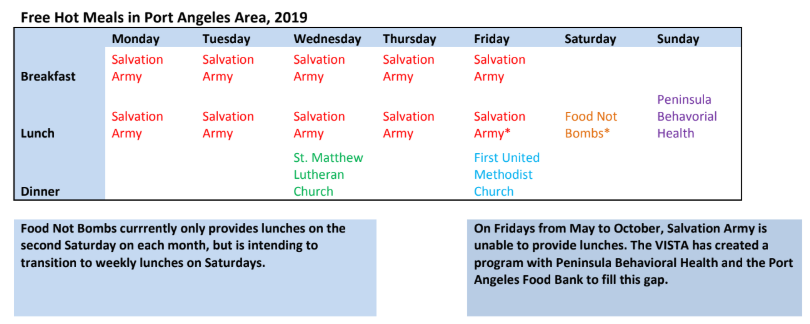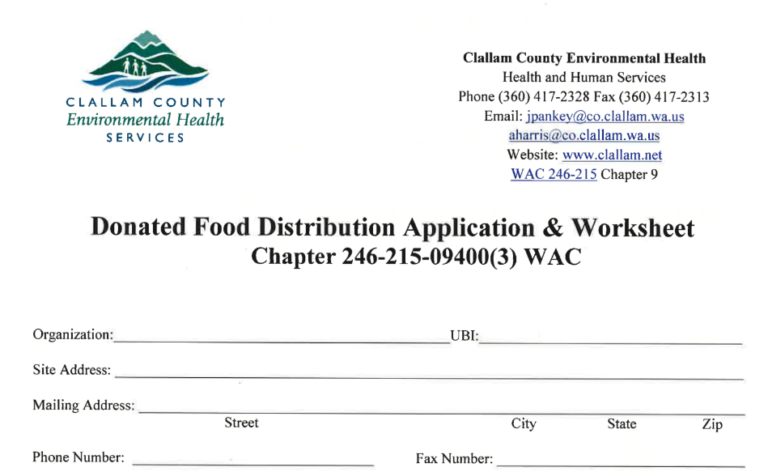How Can We Help?
Community Meals with WSU Clallam County Extension
Community Meals
Overview: In light of the need for quality and healthy meals for food-insecure people, community meals are an excellent way to bring folks together while making sure everyone has access to good food without barriers.
In order to create a successful community meal program, the VISTA must first determine the need by the community for meals. In Port Angeles, this was done by scheduling out the current meals being provided and determining what gaps in this schedule could be filled to alleviate hunger.

By compiling a list of regional community food resources, it will be easier to know which organizations may already be serving meals. This will be a wide variety of traditional and more localized service providers like Salvation Army, shelters, churches and faith groups, health clinics and other nonprofits working with food-insecure populations.
Next, the VISTA needs to find a location to prepare (and ideally also serve) the meals from. Many of the following steps will be identical to those for glean processing (see section on Glean Processing). Many of the organizations already serving meals, such as faith groups or social clubs, may have kitchens and are often willing to waive the use fees when the group is a nonprofit and/or using the kitchen to provide a social service. The kitchen must meet certain food safety standards. A DFDO permit would work best to receive donated food and prepare it for redistribution with the least stringent regulations from an Environmental Health perspective.

See the full Donated Food Distribution Application & Worksheet >
The location should also have a dining room or some place to serve the meal from. While the meal may be transported and served from a public location, this may severely limit the menu items deemed safe for distribution by food safety inspectors, and will also require several more layers of food safety planning around transportation, temperature maintenance, and safe service of the meal.
A volunteer group will be necessary, as will someone on site with a Washington State Food Handlers Card. A way to engage food-insecure individuals and families as volunteers could be to include some cooking and nutrition skills education in the meal preparation, incentivizing participation through free food, new knowledge, and perhaps also a grocery bag of the same ingredients to encourage participants to take the recipe home. Several rotations of volunteers would work best for meal preparation, service and cleaning, instead of asking a full commitment of all volunteers and risking burnout or endangering volunteer retention for future meals.
Sourcing the food also requires advance planning. If the VISTA is working for or organizing the meal with a nonprofit organization, they may be eligible to receive food donated from the food bank, and can design a meal to match the ingredients food bank clients might be familiar with receiving at the food bank, thereby increasing the likelihood that the recipe and prep knowledge will be used again. Local farms, gleaning groups, hot food recovery programs and private donations might also be sources of food that do not involve funding to buy all the ingredients at full price. This demands flexibility by the meal planners to create a coherent and healthy menu around what is available, rather than what they want to serve.
Finally, the event must be planned to accommodate the very people who most need a community meal. Consideration should be given to environmental conditions that could prohibit people from joining: location and timing for those who work, cost of the meal (ideally free or on a sliding scale), if there is child care or family entertainment available to make it family-friendly, how promotion and outreach is done to access different audiences, and so on. This can be challenging to consider all these different elements – ask current meal providers as well as food bank clients and other community meal guests what they need to be accommodated and feel welcome at future meals.


